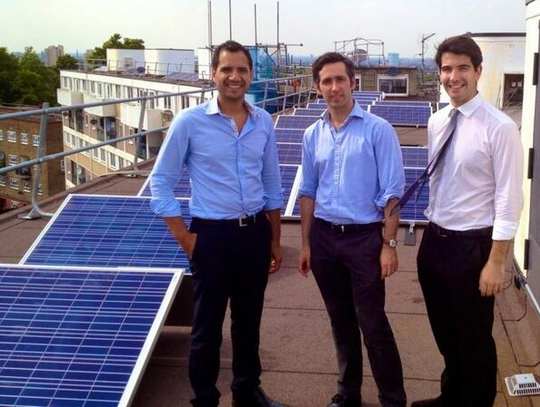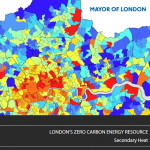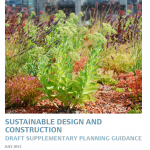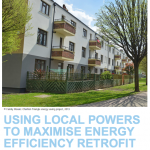Site search:
-
What’s new?
Energy for London Tags
Brent Buildings Camden Carbon Emissions CHP Cities Climate Adaptation Community Heating Community Initiatives Croydon Data DECC Decentralised Energy Distribution ECO Energy Costs Energy Efficiency Enfield FIT Fuel Poverty Funding Green Deal Hackney Haringey Housing Islington Lambeth Library Local Authorities Mayor Newham Ofgem Olympics Photovoltaics Planning RE:FIT RE:NEW Renewable Energy Retrofit Southwark Tower Hamlets Transport Waltham Forest Waste WestminsterEnergy Archives:
- February 2021 (1)
- January 2021 (15)
- December 2020 (15)
- November 2020 (9)
- October 2020 (3)
- August 2020 (5)
- July 2020 (3)
- June 2020 (4)
- April 2020 (10)
- March 2020 (5)
- February 2020 (2)
- January 2020 (3)
- October 2019 (1)
- September 2019 (4)
- August 2019 (2)
- July 2019 (1)
- August 2018 (1)
- November 2016 (8)
- October 2016 (8)
- September 2016 (2)
- August 2016 (8)
- July 2016 (14)
- April 2016 (12)
- March 2016 (16)
- February 2016 (8)
- January 2016 (4)
- December 2015 (1)
- November 2015 (1)
- October 2015 (16)
- September 2015 (3)
- June 2015 (1)
- May 2015 (1)
- April 2015 (1)
- March 2015 (1)
- February 2015 (1)
- January 2015 (1)
- December 2014 (18)
- November 2014 (4)
- August 2014 (8)
- July 2014 (7)
- June 2014 (25)
- May 2014 (8)
- April 2014 (4)
- March 2014 (12)
- February 2014 (7)
- January 2014 (13)
- December 2013 (11)
- November 2013 (15)
- October 2013 (15)
- September 2013 (18)
- August 2013 (5)
- July 2013 (20)
- June 2013 (33)
- May 2013 (8)
- April 2013 (16)
- March 2013 (25)
- February 2013 (14)
- January 2013 (20)
- December 2012 (23)
- November 2012 (23)
- October 2012 (25)
- September 2012 (14)
- July 2012 (12)
- June 2012 (43)
- May 2012 (20)
- April 2012 (8)
- March 2012 (40)
- February 2012 (39)
- January 2012 (40)
- December 2011 (22)
- November 2011 (40)
- October 2011 (33)
- September 2011 (48)
- August 2011 (40)
- July 2011 (58)
- June 2011 (41)
- May 2011 (80)
- April 2011 (38)
- March 2011 (33)
- February 2011 (25)
- January 2011 (24)
- December 2010 (3)
- November 2010 (7)
- October 2010 (6)
- September 2010 (7)
- August 2010 (1)
- July 2010 (2)
- June 2010 (4)
- May 2010 (1)
- March 2010 (3)
- February 2010 (3)
- December 2009 (5)
- November 2009 (2)
- October 2009 (3)
- July 2009 (3)
- June 2009 (1)
- April 2009 (1)
- March 2009 (1)
- February 2009 (1)
- January 2009 (1)
- December 2008 (2)
- October 2008 (1)
- September 2008 (1)
- July 2008 (1)
- March 2008 (2)
- January 2008 (2)
- October 2007 (1)
- September 2007 (3)
- July 2007 (1)
- March 2007 (1)
- February 2007 (3)
- November 2006 (3)
- August 2006 (1)
- February 2006 (1)
- May 2005 (1)
- February 2004 (1)
News
Mayor’s concerns over London’s future electricity supply – correspondence with Ed Davey
September 2013: The Mayor’s concerns over “uncertainties of our energy supply and growing chances of supply disruption in the coming years” have been highlighted in correspondence between Boris Johnson and Ed Davey, the Secretary of State for Energy and Climate Change, Ed Davey, released this week.
The Mayor writes that his “priority is delivering the jobs and growth that will ensure London remains the best big city in the world in which we live, work and invest, and having a secure energy supply will be absolutely crucial to achieving this… I am adamant that we must do everything in our power now to ensure that the lights will stay on in the future.”
The Mayor calls for major changes to the regulatory control framework rules for distribution network operators (DNOs). As these are predominantly monopoly businesses, the operating framework is set by energy regulator Ofgem. DNOs are the companies operating the local electricity grid (as opposed to the higher voltage ‘national transmission grid’) and in London the majority of the distribution network is managed by UK Power Networks and parts of west London by Scottish & Southern Energy. The Mayor letter calls for a “urgent review of the currently regulatory regime to ensure that DNOs are able to invest in energy infrastructure and install capacity ahead of need”.
The Mayor highlights problems with current legislation and – interestingly – points to “the way Ofgem interprets and exercises its regulatory functions [which] are not fit for purpose” and finally calls upon the Secretary of State for ideas on how to give “DNOs in London substantially more scope and flexibility to reduce the level of network stress and improve strategic investment in London’s electricity infrastructure.”
In response to the tightening of electricity supply capacity over the next few years Ed Davey refers to possible extensions to existing balancing services operated by National Grid and in the “medium term …steps to ensure sufficient investment in capacity via the Capacity Market, with the first auction taking place in 2014 for 2018/19 delivery.”
On the issue often brought up by businesses – the speed of installing electricity connections to new users – the Minster’s letter touches upon current Ofgem work to set the new electricity distribution price control (called RIIO ED1) and sets out that “the existing framework provides the flexibility to drive efficiency outcomes in the vast majority of cases.”
The Mayor’s correspondence with Ed Davey is set out in Appendix 6a of the following GLA document.
The Mayor has established a ‘High Level Electricity Working Group’ to look at many of the issues raised above and minutes and papers from the three meetings that have taken place to date of this group can be found here. A further recent paper looking at London’s electricity infrastructure by the London Infrastructure Group can be viewed here.
Energy and Climate Questions to the Mayor
September 2013: This month the Mayor has been asked questions in relation to:
How the Mayor’s programmes will respond to the forthcoming IPCC’s (Intergovernmental Panel on Climate Change) 5th Assessment Report; the Mayor’s “climate sceptic views“; London’s growing energy demand; £145k spend on climate change adaptation; the amount of energy generated from waste incineration; the number of GLA officers working on energy efficiency retrofit; the amount of ECO funding that could be directed to London; the operation of the RE:FIT schools energy efficiency programme in Harrow; the RE:FIT schools programme in Brent; Government’s proposed changes to building regulations and its potential impact on London Plan energy requirements; the Mayor’s response to DECC’s Community Energy – Call for Evidence; the Mayor’s support for community energy schemes in London – such as Brixton Energy; publication of the latest London Energy and Greenhouse Gas Inventory (LEGGI); the cost of producing ‘Using Local Powers to Maximise Energy Efficiency Retrofit – How to’ materials for London’? (report here); the terms of loans provided by the London Energy Efficiency Fund (LEEF); extending LEEF loans to the private sector; details of the LEEF Advisory Committee; consultancy companies working on LEEF; the amount spent by LEEF; the number of loans given out by LEEF; rollover energy contracts for SMEs; Londoners energy bills; the amount of renewable electricity provided by Source London electric vehicle charging points; funds previously spent on adding energy efficiency measures to Metropolitan Police buildings currently for sale; developing a Fuel Poverty Action Plan for London; the supply of electricity to London’s electric vehicle charging points; the supply of electricity to London Underground; London Green Deal targets; a London Green Roofs map; the Mayor’s Green Deal assessment on his home; stimulating Green Deal finance packages; spend of the Green Bus Fund; funding received from the Green Bus Fund; identifying brownfield land in London suitable for sustainable energy projects; CO2 savings achieved by the Mayor’s climate change programmes; potential for the London Pension Fund Authority to invest in low carbon energy projects; when the next update to the Mayor’s Climate Change Adaptation Strategy is to be published; how climate change will affect London’s summer temperatures; new anaerobic digestion plant in Surrey; the level of waste being directed to the Beddington incinerator; the London Plan’s policies on incineration; the Mayor’s approval of the Beddington incinerator; if the Mayor had pressed for the Beddington project to develop as a anaerobic digestion plant; if the Beddington incinerator can operate in combined heat and power (CHP) mode; heat network around the Beddington incinerator; the growth of waste incineration in London to 2016; the role for future incineration in London; local planning controls and fracking; the fracking potential in London; details of the new RE:NEW domestic energy efficiency programme; targets for the new RE:NEW programme; the choice of the Capita Group to manage the new RE:NEW programme; GLA buildings that have been treated by the RE:FIT programme; whether the Mayor’s Environment advisor had visited the Kings Cross CHP and district heating scheme.
Previous months questions to the Mayor can be found here.
Posted in Decentralised Energy, Energy Efficiency, News, Renewable Energy
Tagged Anaerobic Digestion, Brent, Buildings, Carbon Emissions, CHP, Climate Adaptation, Community Initiatives, Energy Security, Funding, Green Deal, Harrow, Lambeth, London Green Fund, Natural Gas, Planning, RE:FIT, RE:NEW, Retrofit, Schools, Transport, Waste
Leave a comment
“The Mayor’s promise of clean and cheap energy from fracking is ‘fool’s gold’”
16 September 2013: News release from London Assembly member, Jenny Jones of the Green Party, in response to the Mayor’s article in The Sun this weekend, which called on Government to accelerate the use of new nuclear power and exploiting shale gas resources via fracking. Ms Jones release ‘The Mayor’s promise of clean and cheap energy from fracking is ‘fool’s gold'” states:
“Instead of putting enough resources into measures such as home insulation that will cut our energy demand, and into renewables such as wind turbines, the Mayor is gambling our future by backing risky technologies such as nuclear and fracking.”
A further response has been posted by online news journal Carbon Brief. Echoing comments in the earlier post on this site on the timeframe to bring in new nuclear and fracking sites, Carbon Brief provides a detailed response to the Mayor’s vision setting out that “Boris’s energy policy quick fix will take a decade to kick in“.
Boris sets out his support for both nuclear & fracking
 15 September 2013: The Mayor has decided to set forth his views on UK energy policy in the national press once again. After writing to The Times back in July (see below), Boris has now penned a piece for The Sun (behind paywall…but fortunately reported elsewhere), where he states that: “the country needs to ‘grow some collective cojones and launch the nuclear energy programme that this country has too long delayed… Next, we must stop pussy-footing around, and get fracking. Even if we have 100s of fracking pads, they are nothing like as ugly as windmills, and they can be dismantled as soon as the gas is extracted.”
15 September 2013: The Mayor has decided to set forth his views on UK energy policy in the national press once again. After writing to The Times back in July (see below), Boris has now penned a piece for The Sun (behind paywall…but fortunately reported elsewhere), where he states that: “the country needs to ‘grow some collective cojones and launch the nuclear energy programme that this country has too long delayed… Next, we must stop pussy-footing around, and get fracking. Even if we have 100s of fracking pads, they are nothing like as ugly as windmills, and they can be dismantled as soon as the gas is extracted.”
The Mayor continues in a similar vein in the article (also reported here ‘Boris on our ‘pathetic apology’ for an energy policy‘) railing against wind turbines – echoing views from a radio interview he undertook on LBC earlier this year (Wind farms couldn’t pull the skin off a rice pudding, says Boris Johnson).
Boris has previously used his weekly Daily Telegraph column to champion gas fracking (Ignore the doom merchants, Britain should get fracking) and much of the commentary for The Sun article was previously set out in a letter the Mayor sent to the The Times a few months ago:
” Sir, Many people have not yet woken up to the reality that the population of London is now growing faster than any city in Europe. As I make clear in our 2020 Vision, this demographic explosion is placing huge demands on our infrastructure — including power generation. It is a tragic comment on Labour’s failure to plan ahead that in only two years our electricity capacity headroom (the difference between demand and supply) will be down to 2 per cent. We will have to ask some of our more energy-intensive industries not to operate at peak times, the kind of policy we last saw in the 1970s. It is time for maximum boldness in energy supply. I fully support the Government’s drive for nuclear power, and if reserves of shale can be exploited in London we should leave no stone unturned, or unfracked, in the cause of keeping the lights on.
Boris Johnson Mayor of London” July 2 2013
That letter was a response to energy regulator Ofgem’s capacity report which set out that “electricity supplies are set to tighten faster than previously expected in the middle of this decade”. Energy security appears to have become a greater concern to the Mayor since raised by London businesses, and has led to the establishment of a London ‘High Level Electricity Working Group‘ coordinated by the GLA.
Whilst security of energy supply issues are a real concern, the Mayor’s choice of solutions are of no real help at all. Nuclear negotiations have stalled over the past year, and even if agreement were reached today, the first power produced by a new nuclear plant is the best part of a decade away – well after the 2015 capacity concerns. Discussions around shale gas have become increasingly polarised: whatever the final outcome, it is unlikely that fracked gas will have any significant role to play in the nation’s energy mix for some time.
Posted in News, Renewable Energy
Tagged Energy Security, Mayor, Natural Gas, Ofgem, Renewable Energy, Wind
Leave a comment
Mayor’s Energy Advisor Visits Brixton Energy
September 2013: It seems the Brixton Energy Solar (BES) projects are the place to be seen! Following visits from Labour Shadow Energy Minister Luciana Berger back in 2012, and a joint visit by the Secretary of State for Energy and the Minister for Energy (Ed Davey MP and Greg Barker MP respectively) earlier this summer, where the Government’s Community Energy Call for Evidence paper was launched, the Mayor’s Energy & Environment Advisor Matthew Pencharz paid a visit to the team and project in August.
 Flagging Matthew on the left and right are BES Directors Agamemnon Otero and Andre Pinho.
Flagging Matthew on the left and right are BES Directors Agamemnon Otero and Andre Pinho.
PS … And good to see Labour Shadow Secretary of State for Business – and Streatham MP – Chuka Umuna visiting the Brixton site on 13 September alongside Imogen Walker, Lambeth’s cabinet member for Environment & Sustainability & Labour councillor for Stockwell. It will be interesting to see what – if anything! – these high profile visitors can do to help support the growth of community-led energy schemes in London…
London’s Zero Carbon Energy Resource
 September 2013: Detailed GLA-commissioned study looking at “two particular categories of heat, both of which can be termed ‘secondary sources’: waste heat arising as a by-product of industrial and commercial activities; and the heat that exists naturally within the environment (air, ground, water).”
September 2013: Detailed GLA-commissioned study looking at “two particular categories of heat, both of which can be termed ‘secondary sources’: waste heat arising as a by-product of industrial and commercial activities; and the heat that exists naturally within the environment (air, ground, water).”
Details of the full report here (direct links below) the findings of which include:
- For most secondary heat sources, their temperature is too low for direct use. It is therefore necessary to ‘upgrade’ them to a useful temperature using heat pumps. Heat pump efficiency is important for secondary heat source utilisation as it affects the cost and carbon intensity of the heat delivered and will impact London’s electrical infrastructure.
- Analysis shows that by using heat pumps to deliver heat at 70°C, the total heat that could be delivered from secondary sources in London is of the order of 71 TWh/yr which is more than the city’s total estimated heat demand of 66 TWh/yr in 2010.
- The proportion of London’s heating demand that could be met by district heating networks operating at 70°C could rise to 30 TWh/yr by 2050, assuming ambitious retrofit programmes were implemented over that period.
Secondary Heat Study – Summary Report
Secondary Heat Study – Phase 1
Secondary Heat Study – Phase 2
Datasets for the study are available on the London Datastore
Posted in Decentralised Energy, Library, News
Tagged Community Heating, Decentralised Energy
Leave a comment
Draft London Sustainable Design Planning Guidance released
 September 2013: The Mayor has issued for public consultation draft supplementary planning guidance (SPG) on Sustainable Design and Construction, which sets out that all major planning applications for developments submitted to the GLA from 1 October 2013 will need to provide CO2 emission savings 40% beyond the 2010 building regulation requirements. This requirement was originally set out in the 2011 London Plan CO2 targets for residential and non-domestic buildings (Policy 5.2). The draft SPG is available here and the deadline for comments is 21 October 2013:
September 2013: The Mayor has issued for public consultation draft supplementary planning guidance (SPG) on Sustainable Design and Construction, which sets out that all major planning applications for developments submitted to the GLA from 1 October 2013 will need to provide CO2 emission savings 40% beyond the 2010 building regulation requirements. This requirement was originally set out in the 2011 London Plan CO2 targets for residential and non-domestic buildings (Policy 5.2). The draft SPG is available here and the deadline for comments is 21 October 2013:
The SPG adds to the London Plan climate and energy policies by providing additional detail on:
- Optimising the use of passive design measures and energy efficiency solutions to help reduce energy consumption
- Setting out minimum requirements for energy masterplans
- Connecting to an existing district heating scheme
- the use of CHP and onsite heat networks (and references that further information can be found in the ‘District Heating Manual for London‘)
Pages 49-50 provide some helpful detail on the use of CO2 off-set funds stating that“Boroughs may agree with a developer for the developer to directly off-set any shortfall in carbon dioxide reductions from a scheme by installing a carbon dioxide saving project off-site. Measures could include directly funding or installing community energy and retrofitting projects”. On the price of carbon, the SPG says “Boroughs should develop and publish a price for carbon dioxide” – but goes on to provide an example of using the Zero Carbon Hub’s suggested price of £46 per tonne:
” The overall contribution should be calculated over 30 years. For example,using the Zero Carbon Hub price equates to £46 x 30 years = £1,380 per tonne of carbon dioxide to be off-set.”
The guidance goes on to say: “It is essential that boroughs identify a suitable range of projects that can be funded through the carbon dioxide off-set fund. Preference should be given to retrofitting publicly owned property as this would provide wider community benefit. Initial discussions suggest that schools, council buildings and social housing are the buildings that could be retrofit most readily. Another option could be establishing a borough wide revolving energy fund, where a loan is provided to local residents or businesses wanting to retrofit energy and water saving measures.” Islington have recently published details of their own carbon offset fund – with a buy-out price starting at £950 – details here.
Paras 2.4.64 include some interesting new information with guidance on incorporating the use of demand side response measures, stating that:
“When negotiating with developers on planning applications, boroughs should encourage them to install systems that would enable the development to take advantage of demand side response … The Mayor has set up a permanent working interface with UK Power Networks to identify initiatives that each might take to support the development of demand side response measures within the UKPN network.“
Latest greenhouse gas inventory data for London published
September 2013: The London Datastore has recently posted detailed greenhouse gas emission data for London across a wide range of economic sectors. The spreadsheet for the 2011 update to the London Energy and Greenhouse Gas Inventory (LEGGI) provides estimates of energy consumption and CO2 emissions from Homes, Workplaces and Transport within the Greater London area and is produced by the GLA on an annual basis to measure progress against the Mayor’s Climate Change Mitigation and Energy Strategy.
The Department of Energy and Climate Change (DECC) also provide London emissions data (though not to the level of detail as that set out in the LEGGI) in a series of sub-regional statistics which can be downloaded here.
New London guidance on preparing planning energy assessments released
September 2013: In line with Policy 5.2 of the London Plan, all major new developments submitted for planning in London are required to provide a detailed energy assessment as part of their planning application. The GLA has provided developers with additional guidance setting out in detail on how these assessments should be undertaken and, as a result of new planning energy targets being proposed by the Mayor (see below), a revised energy assessment guidance document has just been released.
The guidance has been updated to align with the Mayor’s recent proposals, set out in a draft Supplementary Planning Guidance (SPG) document on sustainable design and construction, that states that from 1st of October 2013, the Mayor will apply the 40% carbon reduction target (beyond Part L 2010) to all planning applications. This target has been set to work to the Government’s long-standing commitment for all new homes to be zero carbon by 2016.
Things have however become more complicated in the past few weeks… The Department for Communities and Local Government (DCLG) has recently announced a step-back in carbon requirements in their new building regulations standards for England, which will now come into operation with a delayed start-date of April 2014. At the same time however, the Government has continued to state their continued commitment to the 2016 zero carbon target. The GLA’s guidance document attempts to address this with the following statement:
“At this stage the target will remain 40% beyond 2010 Building Regulations. Following the announcement regarding the proposed changes to Part L of the Building Regulations by the Department of Communities and Local Government on the 30th July 2013 along with any new modelling considerations the Mayor is reviewing the implications for new developments. A further update of this guidance will be issued, if necessary, to reflect the changes to Part L of the Building Regulations coming into effect on the 6 April 2014 and the conclusions of the Housing Standards Review. This update will also reflect any changes to the Supplementary Planning Guidance (SPG) on Sustainable Design and Construction arising following consultation.”
The recently released GLA monitoring report on the implementation of the London Plan’s energy policies clearly shows that the development industry can respond to challenging planning energy targets, and London is now seeing significant growth in climate-friendly buildings which are both highly energy efficient, and are also generating a proportion of their own heat and power needs through onsite decentralised energy generation technologies. At the same time, Government appears to be ignoring such evidence and is going backwards in its commitments on the development of low carbon buildings.
Latest review of implementation of London Plan energy policies
September 2013: The GLA have recently produced their latest update on how the energy and climate policies in London’s spatial planning strategy – the London Plan – have helped drive forward the development of lower carbon buildings in the capital. The new 2013 report – along with previous years studies – can be downloaded here. An earlier post here provides some details on these reports.
The study ‘Energy Planning: Monitoring the implementation of London Plan energy policies in 2012‘ provides an analysis of the energy assessments relating to all finalised (stage II) planning applications determined from 1 January to 31 December 2012. As the Executive Summary of the report sets out “London planning authorities must consult the Mayor on all planning applications that are of strategic importance to London . For each planning application referable to the Mayor, an energy assessment is required setting out how the development will meet the London Plan energy policies. Following the order of the Mayor’s energy hierarchy, each energy assessment is required to set out how the development will:
- Use less energy
- Supply energy efficiently
- Use renewable energy”
The analysis highlights how the London Plan’s policies are making significant headway in helping drive forward the development of more energy efficient, climate-friendly buildings in London. Some of the findings include:
- High levels of energy demand reduction achieved with developments exceeding the requirements of Building Regulations through energy efficiency alone. The associated investment of circa £32 million will help to reduce consumers’ energy bills.
- Circa £20 million of investment in new, high efficiency combined heat and power (CHP) plant able to produce 29MW of electricity and a similar amount of heat.
- 74MW of cumulative CHP electrical capacity has been secured through the planning process since 2010 to the end of 2012, broadly equivalent to the capacity required to supply 150,000 homes.
- Circa £133 million of investment in heat network infrastructure for approximately 53,000 communally heated dwellings
- Continued investment in on-site renewable energy systems, including approximately £16 million to provide circa 87,000m2 of photovoltaic solar panels.
Posted in Library, News
Tagged Buildings, CHP, Community Heating, Decentralised Energy, Energy Efficiency, Photovoltaics, Planning, Renewable Energy
Leave a comment
Patience brings London district heating rewards
August 2013: COSPP article giving a little more background to the SELCHP heat offtake scheme in Southwark (more of which here).
Using Local Powers to Maximise Energy Efficiency Retrofit Toolkit
 August 2013: CAG Consultants on behalf of the GLA have developed a new toolkit – Using Local Powers to Maximise Energy Efficiency Retrofit Toolkit – “to help London’s councils identify and implement solutions to help attract investment and delivery for energy efficiency measures. It focuses on three commonly cited challenges: planning, data and logistics.” The report highlights that:
August 2013: CAG Consultants on behalf of the GLA have developed a new toolkit – Using Local Powers to Maximise Energy Efficiency Retrofit Toolkit – “to help London’s councils identify and implement solutions to help attract investment and delivery for energy efficiency measures. It focuses on three commonly cited challenges: planning, data and logistics.” The report highlights that:
- The opportunity for energy retrofitting in London’s housing is immense: more than one in five of the U.K.’s solid walled homes are in the capital, as well as 14 per cent of England’s fuel poor homes.
- Energy efficiency projects can regenerate entire communities, drive up housing values and engage residents in wider issues of sustainability
- Retrofitting also provides an opportunity for pioneering local authorities to get an edge in the growing energy efficiency market and generate local jobs.
- London has the highest proportion of properties in conservation areas of any UK city – around 500,000 properties. For these properties, planning permission is required for most works which change the external appearance of the property.
The guide provides some helpful references to planning guidance issued by Camden (also see here and here for further information) and Haringey to help support energy efficiency retrofit measures such as solid wall insulation. A further barrier often faced by retrofit programmes has been identifying the most vulnerable homes that would benefit from increased levels of insulation as a priority, and the report provides some useful information on data-sharing initiatives undertaken by Southwark and Haringey councils, working alongside colleagues in housing and benefits teams, to help overcome this [p 27-30].
Posted in Energy Efficiency, News
Tagged Energy Efficiency, Haringey, Housing, Islington, Local Authorities, Retrofit, Southwark
Leave a comment

